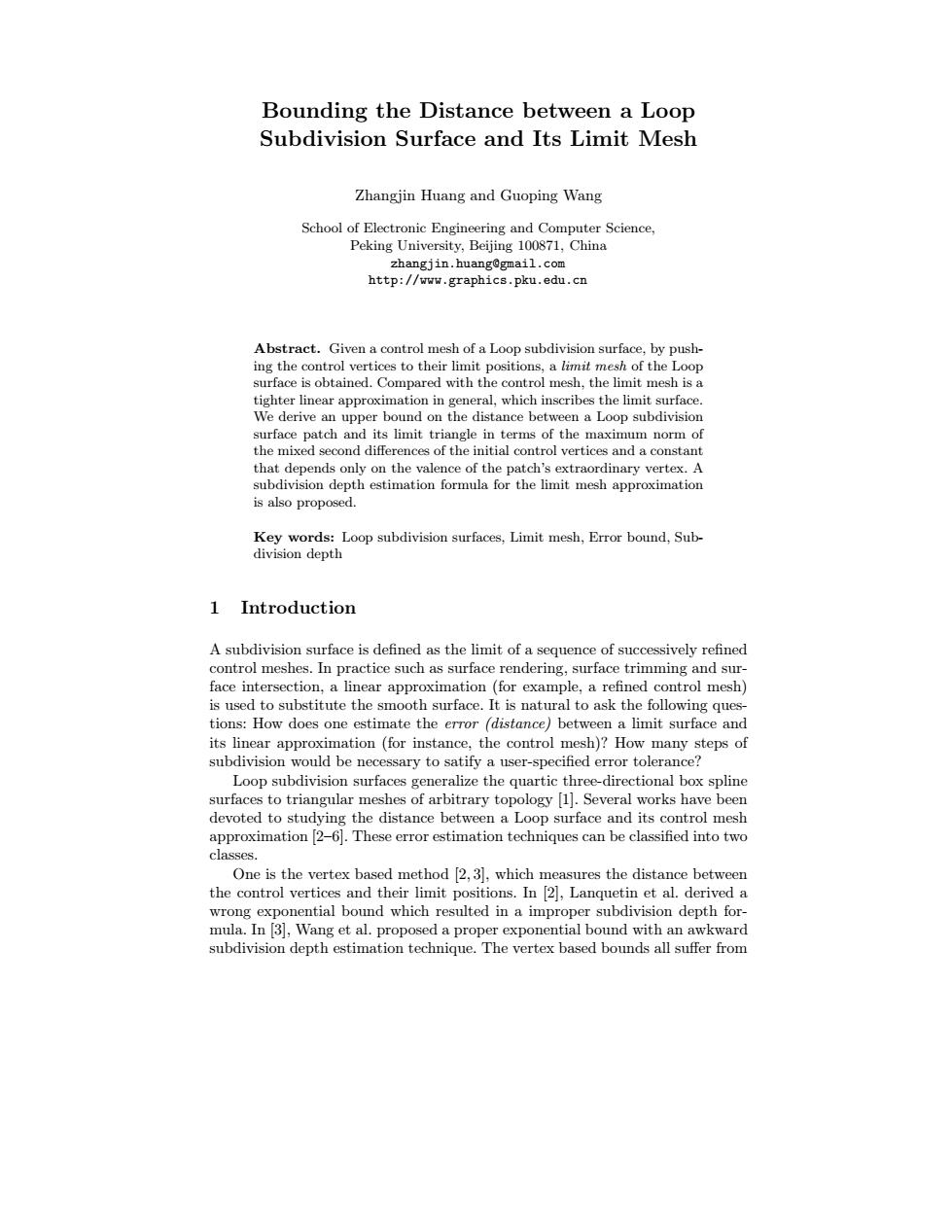正在加载图片...

in KeealoopatdthaauaesLntncod.Erebod.Sab个 1 Introduction Bounding the Distance between a Loop Subdivision Surface and Its Limit Mesh Zhangjin Huang and Guoping Wang School of Electronic Engineering and Computer Science, Peking University, Beijing 100871, China zhangjin.huang@gmail.com http://www.graphics.pku.edu.cn Abstract. Given a control mesh of a Loop subdivision surface, by pushing the control vertices to their limit positions, a limit mesh of the Loop surface is obtained. Compared with the control mesh, the limit mesh is a tighter linear approximation in general, which inscribes the limit surface. We derive an upper bound on the distance between a Loop subdivision surface patch and its limit triangle in terms of the maximum norm of the mixed second differences of the initial control vertices and a constant that depends only on the valence of the patch’s extraordinary vertex. A subdivision depth estimation formula for the limit mesh approximation is also proposed. Key words: Loop subdivision surfaces, Limit mesh, Error bound, Subdivision depth 1 Introduction A subdivision surface is defined as the limit of a sequence of successively refined control meshes. In practice such as surface rendering, surface trimming and surface intersection, a linear approximation (for example, a refined control mesh) is used to substitute the smooth surface. It is natural to ask the following questions: How does one estimate the error (distance) between a limit surface and its linear approximation (for instance, the control mesh)? How many steps of subdivision would be necessary to satify a user-specified error tolerance? Loop subdivision surfaces generalize the quartic three-directional box spline surfaces to triangular meshes of arbitrary topology [1]. Several works have been devoted to studying the distance between a Loop surface and its control mesh approximation [2–6]. These error estimation techniques can be classified into two classes. One is the vertex based method [2, 3], which measures the distance between the control vertices and their limit positions. In [2], Lanquetin et al. derived a wrong exponential bound which resulted in a improper subdivision depth formula. In [3], Wang et al. proposed a proper exponential bound with an awkward subdivision depth estimation technique. The vertex based bounds all suffer from